Chapter 1. Attachment Behaviors in the Strange Situation
Synopsis
Attachment Behaviors in the Strange Situation
Authors

Lisa Huffman, Ball State University
S. Stavros Valenti, Hofstra University
Synopsis
The interaction between caregivers and children is a critical part of development. This activity provides background information on parent‐child attachment and how it is measured in the Strange Situation. You will be able to observe examples of the various parent‐child attachment patterns.
REFERENCES
Ainsworth, M. D. SA., Biehar, M., Waters, E., & Wall, S. (1978). Patterns of attachment. Hillsdale, NJ: Erlbaum.
Bowlby, J. (1969). Attachment and loss: Vol. 1: Attachment. New York: Basic Books.
Beijersbergen, M., Juffer, F., Bakermans‐Kranenburg, M. J., and van IJzendoorn, M. (2012). Remaining or Becoming Secure: Parental Sensitive Support Predicts Attachment Continuity From Infancy to Adolescence in a Longitudinal Adoption Study. Developmental Psychology, 48(5), 1277‐1282. DOI: 10.1037/a0027442
Grossmann, K., Grossmann, K. E., Spangler, G., Suess, G., & Unzer, L. (1985). Maternal sensitivity to newborns’ orientation responses as related to quality of attachment in Northern Germany. In I. Bretherton & E. Waters (Eds.), Growing points of attachment theory and research. Monographs of the Society for Research in Child Development, Vol. 50 (1‐2 Serial No. 209).
Lyons‐Ruth, K., Bronfman, E., & Parsons. E. (1999). Maternal frightened, frightening, ora typical behavior and disorganized infant attachment patterns. Monographs of the Society for Research in Child Development, 64 (3, Serial No. 258), 67–96.
Rothbaum, F., Pott, M., Asuma, H., Miyake, J., & Weisz, K. (2000). The development of close relationships in Japan and the United States: Paths of symbiotic harmony and generative tension. Child Development, 71, 1121–1142.
Thompson, R. A. (1998). Early socio‐personality development. In N. Eisenber (Ed.), Handbook of child psychology, Vol. 2: Social, emotional, and personality development (5th ed., pp. 25–104). New York: Wiley.
Van IJzendoom, M. H., & Sagi, A. (1999). Cross‐cultural patterns of attachment. In J. Cassidy & P. R. Shaver (Eds.), Handbook of attachment: Theory, research, and clinical applications (pp. 713–734). New York: Guilford.
Infants’ Attachment to Caregiver
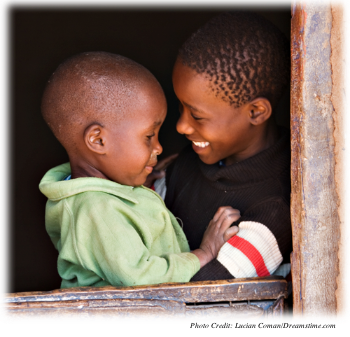
Attachment is the tie that binds one person to another. Our earliest attachment, and oneof the most important in our lives, is that to our mother, father, or close caregiver.
According to John Bowlby, a high‐quality attachment in infancy is important for two reasons.
- It provides the infant with a secure base from which to explore the environment and to learn about people and objects in the world.
- It provides an internal working model, or a mental representation, of relationships that acts to guide the child in future relationships.
The Strange Situation
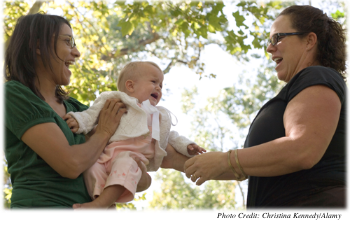
Based on Mary Ainsworth’s research, Ainsworth and Wittig created the Strange Situation as a method for assessing the degree of attachment between a child and a caregiver. Children and caregivers are observed in the Strange Situation, which is made up of 7 3‐minute segments:
- (1) caregiver and child together;
- (2) stranger enters joining caregiver and child;
- (3) caregiver leaves child and stranger alone;
- (4) caregiver returns, and stranger leaves:
- (5) caregiver departs leaving child alone;
- (6) stranger returns to be with child;
- (7) caregiver returns and stranger leaves.
By observing how the child responds to the caregiver leaving, how the child does or does not explore the surroundings, how the child responds to the stranger, and how the child responds to the caregiver’s return, a researcher can assign the observed attachment to one of four types: secure attachment, insecure‐resistant attachment, insecure‐avoidant attachment, or disorganized/disoriented attachment.
Secure Attachment in the Strange Situation
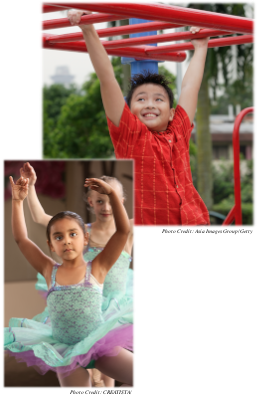
A high‐quality relationship between an infant and the primary caregiver is known as a secure attachment.
- A securely attached infant willingly explores the environment and engages in play in the presence of the caregiver.
- A securely attached infant may become upset when separated from the caregiver but is easily comforted when reunited. The speed and ease of comforting upon reunion is the best indicator of the quality of the attachment.
- A securely attached infant has a special relationship with the primary caregiver, and as a result, no one else is as effective at soothing the infant.
Watch this video of Mateo, who demonstrates secure attachment in a simulation of the Strange Situation.
Insecure‐Resistant Attachment in the Strange Situation
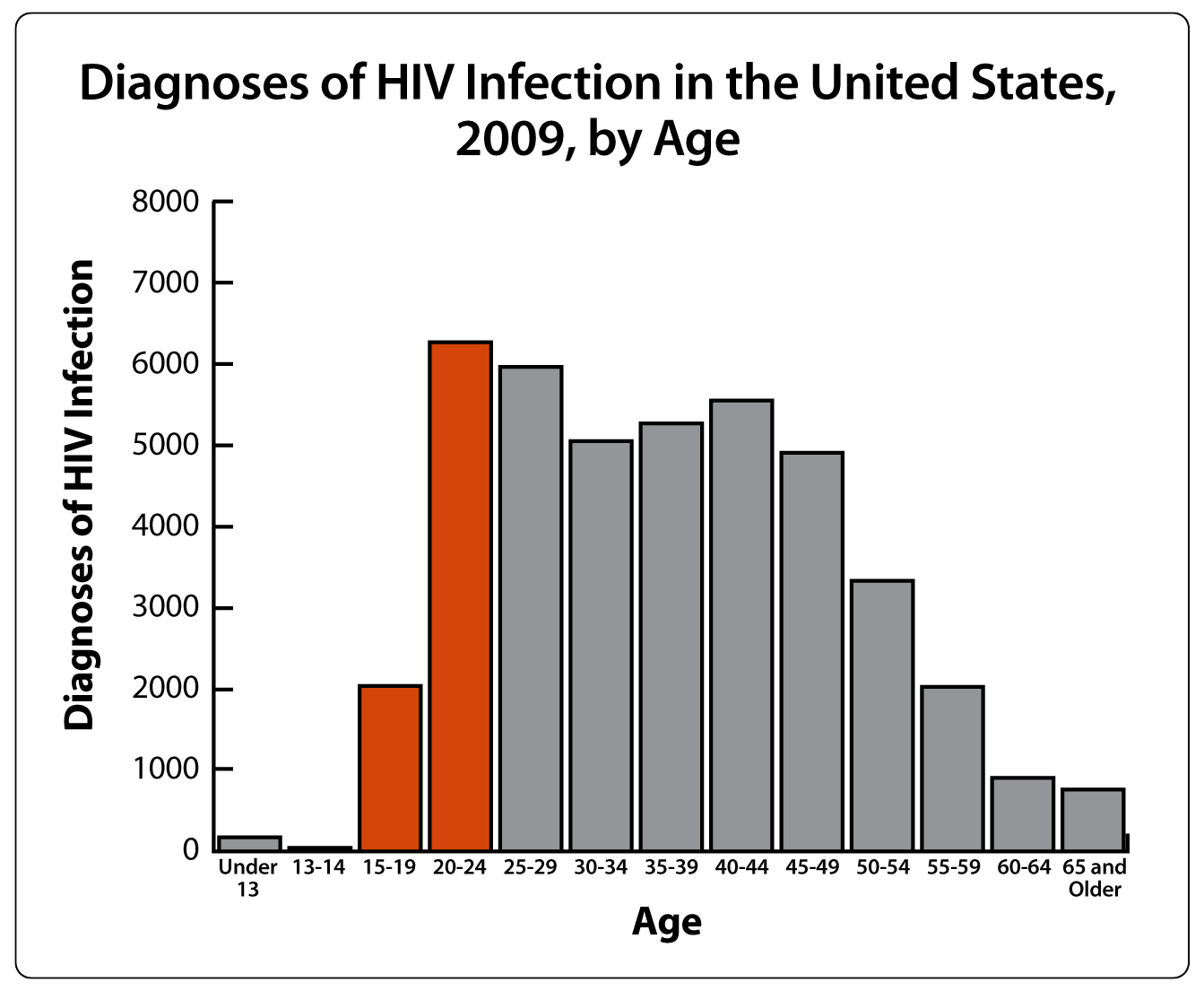
Ainsworth identified two attachment patterns that reflect an insecure attachment. The children in the insecure‐resistant attachment and insecure‐avoidant attachment categories are attached to their caregivers but not as positively nor as strongly as those who are securely attached.
An insecure‐resistant infant is often clingy staying close to the mother in the Strange Situation rather than exploring the room and its toys. When the mother leaves, the child tends to get very upset. The insecure‐resistant child may cry and demonstrate angry behavior. During the reunion, the infant clearly wants to reestablish contact with the mother (e.g., coming close, indicating that he/she wants to be picked up) only to resist those very efforts from the mother (e.g., by hitting and pushing).
Watch this video clip of Isla, who demonstrates insecure‐resistant attachment in a simulation of the Strange Situation.
Question 1.1
uAtkZSLFMCga3k39zJDu4GjRGc2G+SjixV2q3zflWlOS/DcUPUojtedwY8c6z5baKJGZw9wG6poxPB8lDPLJpEQd48fQwi8Mw4/UGAwLKTsFztFv5wcJAoF4hMeX/BwnWdgnxK/s09//QH/MlHqICe2dSuIBTkjDVNm+Tn2Hiwp3ceFPUEjcFj3rkjRrz5GA+jHF65qpYI5wExF6OxfFzHIv1NjEscWMg/y6qA7Hj4otQ9RBKrav6Q==Insecure‐Avoidant Attachment in the Strange Situation
An insecure‐avoidant infant is unresponsive and ignores the mother when she is present. When the mother leaves, the child is not usually distressed and often avoids or fails to greet the mother when she returns.
Watch this video clip of Zachary, who demonstrates insecure‐avoidant attachment in a simulation of the Strange Situation.
Question 1.2
qhvy/X6KL2tLuxxCbadSqdmd+ub6i7rOvJfJ+8Vj1JOf2v6o65Qvxa5hZ3Pcv+UsEf/xyK/1x6G6jS9uh91SYx57I8v+HmTvpatzG8JFcqTQg7oncE2rtwO/M2AKu/vxhZVXcTKZJ0on9scDbtXTdibpV69iIDuBN4dVhpX2fPNwoTkojjWdmkTCPCtzFdpPY0pCba/dGI6vWepk5EAFb1mFUs12wqLyjyW0GbFEG5WN+tJqOqYgIbvJk84=Fourth Pattern of Attachment
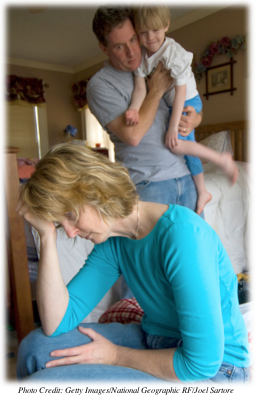
After Ainsworth’s initial studies with the Strange Situation, she discovered a fourth pattern of insecure attachment: disorganized/disoriented attachment.
An infant in this category seems to have no consistent way of coping with the stress of the Strange Situation. The infant’s behavior is often confused or contradictory. The infant often does not cry when the mother leaves. Upon reunion, the child wants to approach the mother but also seems to regard her with fear. For example, the infant may smile while approaching the mother only to suddenly get upset. A disorganized/disoriented child also may seem dazed or perplexed. Some may even demonstrate a “frozen” posture.
Children who are neglected or maltreated, children from homes with parent(s) suffering from a traumatic event, and/or children of depressed mothers are all examples of children at risk for disorganized/disoriented attachment. In these types of situations, these distressed or angry parents may look scared or behave in frightening ways toward their children. The erratic and unpredictable behavior of these types of caregivers is detrimental to the children’s sense of attachment as well as to the children’s overall development.
Cultural Variations in Attachment

In the United States,
- about 5% of children show disorganized/disoriented attachment,
- about 15% of children show an insecure‐resistant pattern of attachment,
- about 20% of children an insecure‐avoidant pattern of attachment, and
- approximately 65 percent of children show a secure attachment.
Infant behavior in the Strange Situation is relatively similar across different cultures. Researchers have discovered that secure is the most frequently found attachment classification in all countries studied to date.
In spite of this worldwide trend, there are some interesting variations in attachment patterns between cultures. In Japan, for example, infants are more likely to become distressed during the Strange Situation and more likely to be classified as insecure‐resistant. Because physical closeness and intimacy between mother and child are considered desirable in Japanese society, Japanese children may be less likely to venture out into the room in the Strange Situation. Furthermore, Japanese mothers rarely leave their children in the care of an unfamiliar person, so their mothers leaving them in the Strange Situation may feel unduly stressful. Another example of cultural variation is that infants in northern Germany are more likely to show higher rates of insecure‐avoidant behavior in the Strange Situation because German parents actively foster independence in their children.
Is Attachment Style Unchangeable?
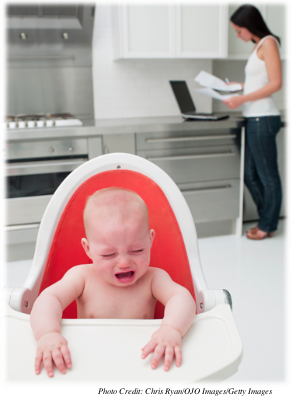
The quality of our relationships with others is not set in stone during infancy. Disruptions in a family’s circumstances can adversely influence the quality of the attachment relationship between caretaker and child. Stresses, such as loss of family income, caretaker changes caused by conflict, divorce, or even death, physical or mental illness of caretaker, or birth of younger sibling(s), can affect how parents and caretakers relate to their children. Research indicates that chronic stresses such as these are likely to disturb attachment patterns and in some cases, to be quite detrimental to a child’s sense of security about relationships. However, changes that increase parental sensitivity and create a more peaceful, stable, home life, such as a change in relationship status that leads to happier caretakers, a move to a safer, more supportive community, a job that yields more income for the household, or development of better parenting skills acquired through experience, observation, or education, can foster more secure attachment styles. This fact means that there is hope for parents, caretakers, educators, and social workers who are striving to create environments for secure attachments between caregivers and their children.
Summary
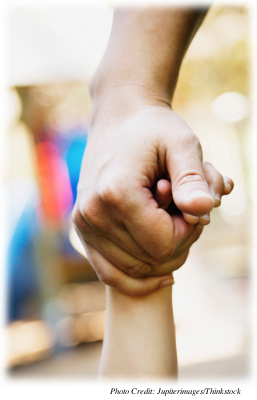
Three patterns of attachment commonly displayed in the Strange Situation are secure, insecure‐resistant, and insecure‐avoidant. Disorganized/disoriented attachment, a fourth pattern, was discovered later after the other three. Attachment types likely reflect differences in culture, family environment, genetic makeup, and life experiences. Familial stresses that may affect, or sometimes even change, children’s attachment patterns include loss of employment, divorce, death in the family, or foreclosure or other financial problems. Other factors affecting attachment style are a child’s temperament, a child’s opportunity for attachment, and parental sensitivity.
The topic of parent‐child attachment is worthy of research because we know that children who are securely attached are more likely to grow up to be more socially competent, have higher self‐esteem, and have more and higher quality friendships than those who are less securely attached to their caregiver.
Assessment: Check Your Understanding

Question 1.3
6E1itmnJkAml6VePD8liMdPlVld0oUF+/z+/ZND8jAG0IeqJ9LNoeLH8ClCEspcLAnNwNXnbe1Xv6YDSKFh8jEZTTQlz4BQHqVLXdPu0J+2eBAVIqwvE0fPPRfKVJJG8rxEZ2I8SiRbA15LtJ1O6+o6JhJiPWnM7ChKSlZKxIqUMBB2c8WhMISTiJY21bJj9NKcLOfuUhnk7nHr2mYZYQPxslSlh+zP/VVxN22TseqDRpGbudhzBCpPkaRaSS4cumSE0uIq+DT0=Assessment: Check Your Understanding

Question 1.4
e4vbD2sqVqBfhkvZETbZpbGuD+gndo7IBJWyWqiZlDA/3t4ZIvJK24e6Ad9TPPwWKqkfD3rZUBbfeiKp/ckb2usPaqfELI5kRYGz4tXIHo9waUkHuNNuhiT1mNeVqhvwCwPo9TA+Cq5mkUT3Sdv91YUgv+nludY/ygbaricWbwgeQlV5rJgCckjqJRh5nqqMBF+Z5SswJBkrWvqGYhBmdE/4cZKesy1vdJmJvYDhzhwgsR3C5e7ihQxQtJj/n/c38DAnOue3WODcoHF2WigSB/gRiMwe1S7PS8W5GgQMHSCf1EephZcsMPcv7VKNdHi2Jy11cQC6Y4gVuYaY0GiCRxZGzY93pcolpQyopYqI1TPy6Sw+KXAE6gtaL0CEFV7xRKz2+l5TsgHQ5IVDScpskQCsc1+Q4PnhYD+pOGLcZjdd3Tg0WGZMCLdxO00IHriVX1x60NMoON5Ss52DCUYkIQ==Assessment: Check Your Understanding

Question 1.5
UmW94Ky5IhuDhVv6CRUeQqZvi9afoJ8enc8aVRZRcIJX70H8q6WonyYWDJ2YahlUsc3bcNp4vSXvI5mxCN1W/yv/PNJs3WIsAFM5I7Pa5Netd6Aj8wlgeozuV9i5TfIULqbtWru0uY4RiP5Is5wLvGbZ/71w/x0A1CxwCCtTvcLcrmI1X489Xhs4QFjtE60lIfFLc9dwtyZT5DCqb4Pk6xHX6beTfxYlDNBLDScujUL+MBmbXUh/7RQ7DT0coapycM1y7kA50PkwdEOzbw70/Am2hnY=Assessment: Check Your Understanding

Question 1.6
4QF941Am66YqzXimb8+OOi3Lo50AF/8Hx7Fbw29I///5S2wXNJaJAJaf1IGdO36szFUim22Lb8Auq4YcQQapTn8pFOnLIkdpMCg8j/qiq8kW4ycezBSb8/KSwMr+HtYLV2TgTPQVsEk/+qCEEkCtzbjbuEe5n/EkaxAvnKzuRqW5gvno3IrAFy0Sr4lFkEzmM/0CNb40j1bmeN14Gy9wBz88inY=Assessment: Check Your Understanding

Question 1.7
usS2Bw95aZdIj8RSB6dluKaD/vE9SlaJRYRn/qox7B43d/aJ8oE8alKkdncV79PoaLFVja71VGVjAB+ToD0tHhtLzHK6zy/3BYj9U/NEroItMn7fUV0bJf6bQph3aaEeNJIB+3ck1MQ7oyfbTexy9n/P5IpwHmI9gu30YD4dPJl6mDKInxAmF+HZRmEWvi7ECongratulations! You have completed this activity.Total Score: x out of x points (x%) You have received a provisional score for your essay answers, which have been submitted to your instructor.